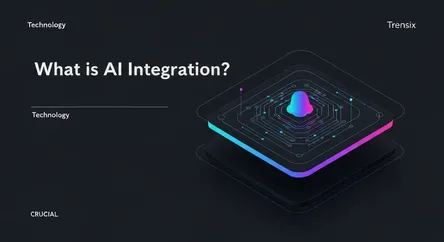Technology
What is AI Integration?

Discover how AI integration is embedding smart technologies into business systems to boost efficiency, automate tasks, and create smarter services.
What is it?
AI integration is the process of embedding artificial intelligence capabilities into existing software, applications, and business workflows. Instead of using AI as a standalone tool, integration weaves its functionalities directly into the systems that companies already use. This can range from adding an AI-powered chatbot to a customer service portal, using machine learning to analyze sales data within a CRM, or implementing predictive maintenance alerts in manufacturing software. The goal is to enhance current processes with intelligent automation, data analysis, and predictive insights without replacing the entire system.
Why is it trending?
AI integration is trending because it makes powerful AI technology practical and accessible. Businesses are under constant pressure to improve efficiency and gain a competitive edge. Integrating AI allows them to automate repetitive tasks, make more accurate data-driven decisions, and offer highly personalized customer experiences. The rise of powerful, API-accessible AI models has lowered the barrier to entry, enabling even small businesses to leverage sophisticated capabilities. It’s a strategic move from experimenting with AI to operationalizing it for tangible business results.
How does it affect people?
For employees, AI integration is changing the nature of work. It automates mundane tasks, freeing up human workers to focus on creative problem-solving, strategy, and other high-value activities. This can lead to increased job satisfaction and productivity, but also necessitates upskilling and adapting to new, AI-assisted workflows. For consumers, the impact is often seen in improved services—faster customer support, more relevant product recommendations, and smarter, more intuitive user interfaces. It's making our digital interactions more seamless and personalized.